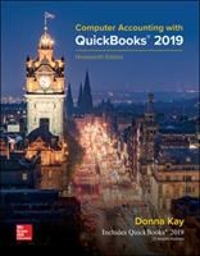Question
Target Corporation is a C corporation. T's 1,000 shares of common stock (its only class) are owned by three unrelated individual shareholders as follows: A:
Target Corporation is a C corporation. T's 1,000 shares of common stock (its only class) are owned by three unrelated individual shareholders as follows:
A: 500 shares; $50,000 adjusted basis; $500,000 FMV
B: 400 shares; $40,000 adjusted basis; $400,000 FMV
C: 100 shares; $140,000 adjusted basis; $100,000 FMV
A and B are in their late 70's and have held their T stock since the company was founded many years ago. C recently inherited her stock.
T has $400,000 of accumulated E&P and the following assets (all held long-term) and liabilities:
Adj. Basis
FMV
Cash
$200,000
$200,000
Inventory
50,000
100,000
Equipment ($100,000 1245 recapture)
100,000
200,000
Buildiig (no recapture)
50,000
300,000
Securities
400,000
300,000
Goodwill
0
200,000
Bank loan
300,000
T and its shareholders are considering a sale of the business. Purchaser Corporation (P) is interested in acquiring T. Assume that C corporations are taxed on all their income at a flat corporate rate of 21% and individuals are taxed at a flat 35% rate on ordinary income and a 15% rate on long-term capital gain.
What are the tax consequences of the following alternative acquisition methods to T, T's shareholders and P?
(a) T adopts a plan of complete liquidation, sells all of its assets (except the cash but subject to the bank loan) to P for $800,000 cash, and distributes the after-tax proceeds to its shareholders in proportion to their stock holdings.
Target Corporation (T):
T's shareholders:
A:
B:
C:
Purchaser Corporation (P):
(b)T adopts a plan of complete liquidation, distributes all of its assets (subject to the liability) to its shareholders in proportion to their stock holdings, and the shareholders then sell the assets (less any cash but subject to the bank loan ) to P for $800,000.
Target Corporation (T):
T's Shareholders:
A:
B:
C:
Purchaser Corporation (P):
(c) In general, how would the results in (a), above, change if P paid T $200,000 cash and $600,000 in notes, with market rate interest payable annually and the entire principal payable in five years?
Target Corporation (T):
T's Shareholders:
A:
B:
C:
Purchaser Corporation (P):
(d) T sells all of its assets (except for the cash but subject to the bank loan) to P as in (a), above, except that T does not liquidate and instead invests the after-tax sales proceeds in a portfolio of publicly traded securities.
Target Corporation (T):
T's Shareholders:
Purchaser Corporation (P):
(e)(1) P purchases all the stock of T for $800/share and makes a 338 election.
Target Corporation (T):
T's Shareholders: You have to calculate each S/Hs gain/loss separately.
A.
B.
C.
Purchaser Corporation (P):
(e)(2) Why didn't P pay $1,000/share for the T stock?
(f) P purchases all the stock of T for cash but does not make the 338 election. (Consider generally what P should pay for the T stock).
Target Corporation (T):
T's Shareholders:
A:
B:
C:
Purchaser Corporation (P):
(g) Assuming P and T are indifferent to the form of the transaction, would you recommend the acquisition method in (a) (purchase of assets) , (e) (purchase of stock with 338 election) or (f) (purchase of stock without 338 election), above?
(h) Would your recommendation in (g), above, change if T had $600,000 in NOL carryovers?
(i) Assume that T is a wholly-owned subsidiary of S, Inc., and S has a $200,000 adjusted basis in its T stock. What result if T distributes all of its assets (subject to the liability) to S in complete liquidation, and S then sells the assets to P?
(j) Same as (i), above, except P insists that the transaction must be structured as an acquisition of T stock.
Step by Step Solution
There are 3 Steps involved in it
Step: 1

Get Instant Access to Expert-Tailored Solutions
See step-by-step solutions with expert insights and AI powered tools for academic success
Step: 2

Step: 3

Ace Your Homework with AI
Get the answers you need in no time with our AI-driven, step-by-step assistance
Get Started


